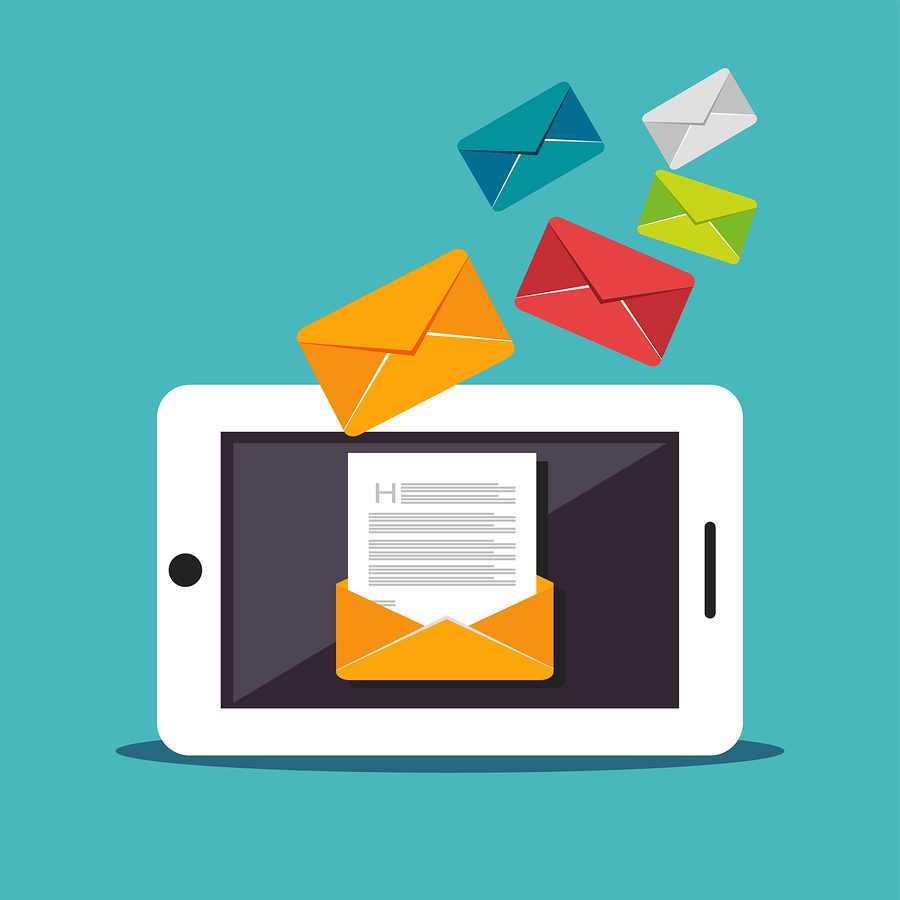
We get it. It’s an e-jungle out there — and trying to get customers to notice your emails is no small task. Email is often the first point of contact between a small business or nonprofit and a consumer. Balancing email marketing can be tricky. What if you’re being too aggressive? Or not aggressive enough?
There are good arguments why this balance is important (and can be tricky) for all kinds of businesses. But there’s a fine line between sharing your product or service and coming off too strong. Get it right and you have yourself a customer. Get it wrong and you’ll leave the recipient with a bad experience they may forever associate with your brand.
Here are some tips for finding balance in your email marketing.
Be personal…but not too personal.
Surely you’ve heard stories about marketing gone wrong: the woman who received coupons for baby formula right after suffering a miscarriage. The daughter who starting seeing online ads for mortuaries when she had to put her father in a nursing home.
Artificial intelligence gives us loads of data on customers, but that doesn’t mean you should use it. A Stanford study shows recipients are 20% more likely to open emails that have their names in the subject line.
But a majority of consumers say getting too personal is somewhat creepy. Nearly a quarter say it’s creepy enough to turn them off entirely.
Common sense goes a long way. If something in your email isn’t something you would say as part of your sales pitch, don’t put it in your email.
Step away from the hard sell
The hard sell is designed to steer the consumer toward a quick buying decision, without thinking too much about different options. It’s not a method designed to establish a long-term relationship.
Many people find it turns them off completely because it’s a high pressure situation. If you’ve ever sat through a hard-sell pitch for a timeshare, you know what we’re talking about. The hard sell is, by definition, aggressive.
Here are some examples of some hard sell subject lines:
- SALE ENDS AT 12 AM EST!!!
- Last chance to use your promo code!
- Act Now, Before It’s Too Late!
If your hard sell is sitting in someone’s inbox, your email will likely end up deleted, unless it’s precisely what the consumer wants, when they want it. Do you really want to waste that energy on what-ifs?
Instead, spark curiosity by provoking an emotional response or offering the answer to a problem. This can be tricky and requires more thought; you have mere seconds to hook the consumer’s attention. The reward is more engagement with the email, and more of the desired response. For example:
- You wouldn’t delete $100 would you?
- Are you enjoying your purchase?
- We’re sorry we made a mistake! We’re making it up to you.
Don’t stop at just one

If at first, you don’t succeed, try again. Your target audience may have missed the email. The subject line didn’t resonate. They got interrupted. They weren’t ready to make a decision. There are a million reasons why people don’t respond to emails.
Consider using our OpenGen feature to combat this by automatically re-sending your campaign to recipients who don’t open it the first time — this time with a different subject line. This can boost results because a different subject line might resonate the second time around.
Emailing more than once, with at least a couple days in between, increases the chances users will engage with the message.
How often you should send depends on your business, but we suggest starting small. Send to your list at least twice a month, but no more than twice a day to start. Measure how they react by keeping track of opens, clicks, purchases, etc.), and scale based on that.
There is such a thing as too much

One of the pitfalls of modern life is email overload. In a survey asking consumers about why they opt-out from email lists, 69% of them said it was because they received too many emails.
Generally speaking, subscribers expect to receive emails weekly or monthly. Yet most companies send out daily, if not multiple emails throughout the day.
If you’re seeing an increase of unsubscribes or spam complaints, dial back the frequency. If you’re not getting the results you had hoped for, consider increasing the number of emails you send.
There isn’t one answer
What one email user finds informative, another may find aggressive. There is no one answer here, but testing is how you’ll land on one that works. Learn how to write cold emails and find the balance between being informative and aggressive.
Ryan Farley is the head of growth and co-founder of LawnStarter Lawn Care, a tech company connecting homeowners with lawn care professionals through mobile and desktop platforms. On top of that, he’s responsible for sending several million marketing emails every year to stay connected to his customer base.

